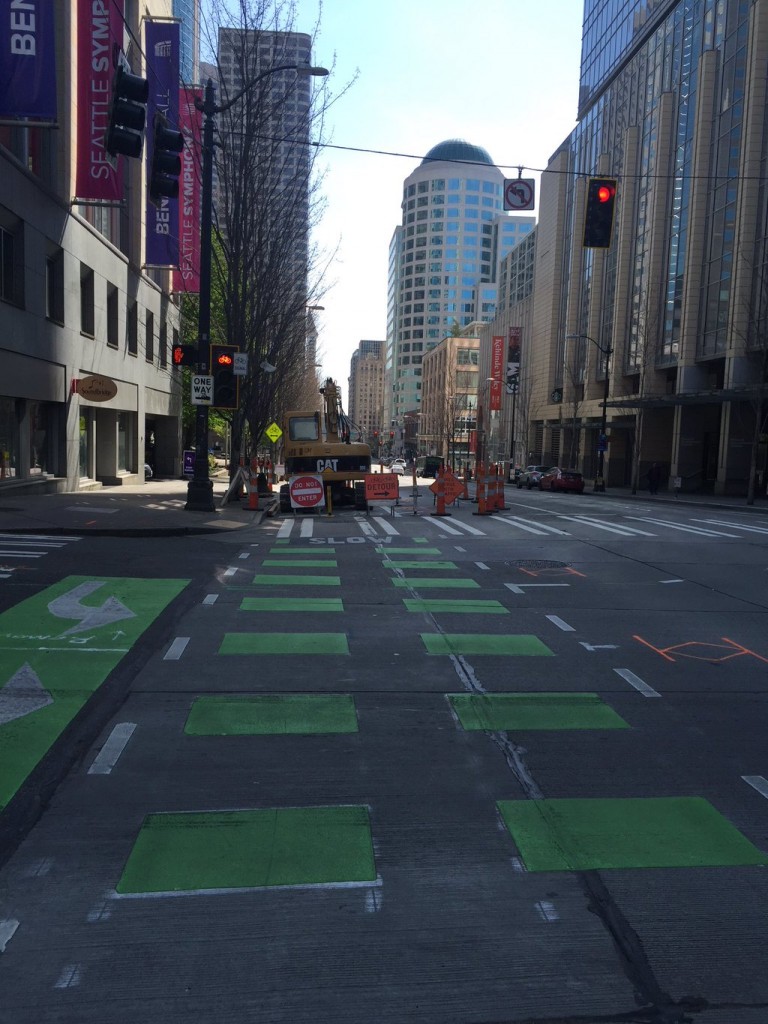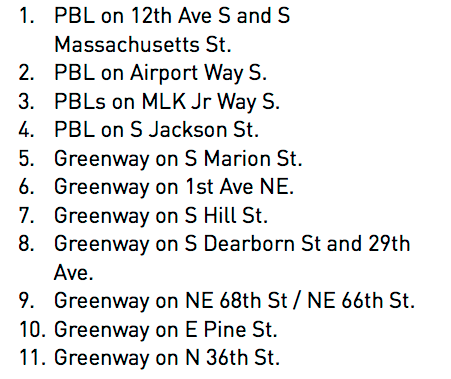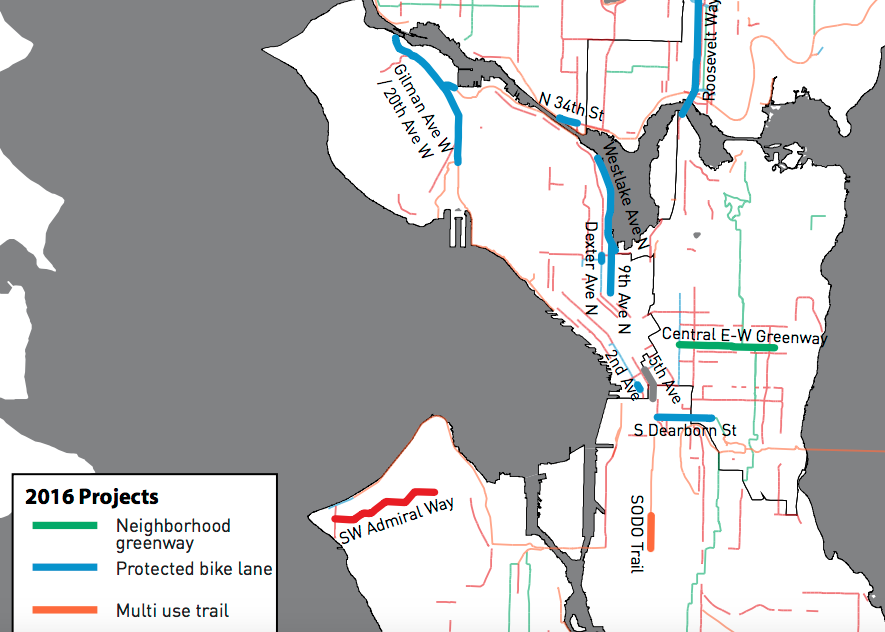When the City Council approved the purchase of the assets of the Pronto bikeshare system in March, an amendment was introduced by Councilmember Mike O’Brien to hinge the expansion of the system in 2017 on the moving forward of five segments of protected bike lanes that are currently planned for construction. The idea was that bikeshare needs an expansion of bike infrastructure to be successful, and also blunted criticism that the bikeshare money could have been better spent on infrastructure. These projects were already planned by the City, and tying them together was a clever way to make a statement that the council is serious about expanding the infrastructure at the same time it was approving the purchase of Pronto’s assets.
The Seattle Department of Transportation (SDOT) then proceeded to close the only safe biking route through Downtown, Second Avenue, in order to upgrade the barriers between traffic and the bike lane and to add raised driveways and crosswalks in front of highly trafficked areas like the Benaroya Hall parking garage.

A dedicated detour was not provided for bikes, and SDOT did not provide very much information on the bike lane closure via its social media accounts, which are primarily used to inform drivers of stalled vehicles on arterials. The message: bike users can live without a downtown bike corridor while we improve the one we have.
The problem with this, obviously, is that it harms the effort to build a safe biking culture in Seattle. One day during which someone doesn’t feel safe biking can cancel out months of the system working exactly as it should.
This came a few months after the first rumors that the Murray administration was planning to postpone any implementation of the City’s downtown bike network until after the completion of a report called the Center City Mobility Plan. This past week, SDOT released the official version of its five-year implementation plan for the Bicycle Master Plan. It confirms the worst fears of the bicycle advocacy community: the City is planning its bike network while leaving Downtown with the one north-south corridor and no east-west corridors. Even worse, it cut the number of planned miles of protected bike lanes (PBLs) and greenways outside of the downtown core dramatically. Those omitted from the 5-year plan include the following:

The Rainier Valley is particularly left out, with an unprotected bike lane on Renton Avenue S as the only project planned in Southeast Seattle in 2016. There is no direct route between Rainier Avenue and Downtown in the entire five-year implementation plan. There are no new greenways planned in Northeast Seattle, and very little in improvements for West Seattle.
All of this after Seattle voters overwhelmingly supported a ballot measure that focused heavily on improving transportation options for those traveling via public transit, by bike, and by foot. Mayor Murray has focused on the Safe Routes to School (SRTS) program as the main program getting a boost from the Move Seattle levy, and has seemingly forgotten about Vision Zero, Seattle’s goal of getting to zero fatalities or serious injuries on our streets by 2030.
Lest we forget, PBLs make our roads safer, contributing both directly via safer design with fewer conflict points and indirectly by boosting the safety in numbers effect as they boost bicycle ridership. The effects spillover and make it safer for people walking and in some instances the redesigns speed travel times for motorists too. It’s a virtuous cycle but apparently the City would prefer most Seattle streets maintain their edgy Mad Max feel than get serious about Vision Zero. Let’s not kid ourselves; limping forward with our anemic bike network is not going to get us to zero. The Seattle Department of Transportation has a steep hill in front of them to regain the confidence of bicycle advocates, and there’s no bike lane on it.
Ryan Packer lives in the Summit Slope neighborhood of Capitol Hill and has been writing for the The Urbanist since 2015. They report on multimodal transportation issues, #VisionZero, preservation, and local politics. They believe in using Seattle's history to help attain the vibrant, diverse city that we all wish to inhabit. Ryan's writing has appeared in Capitol Hill Seattle Blog, Bike Portland, and Seattle Bike Blog, where they also did a four-month stint as temporary editor.





